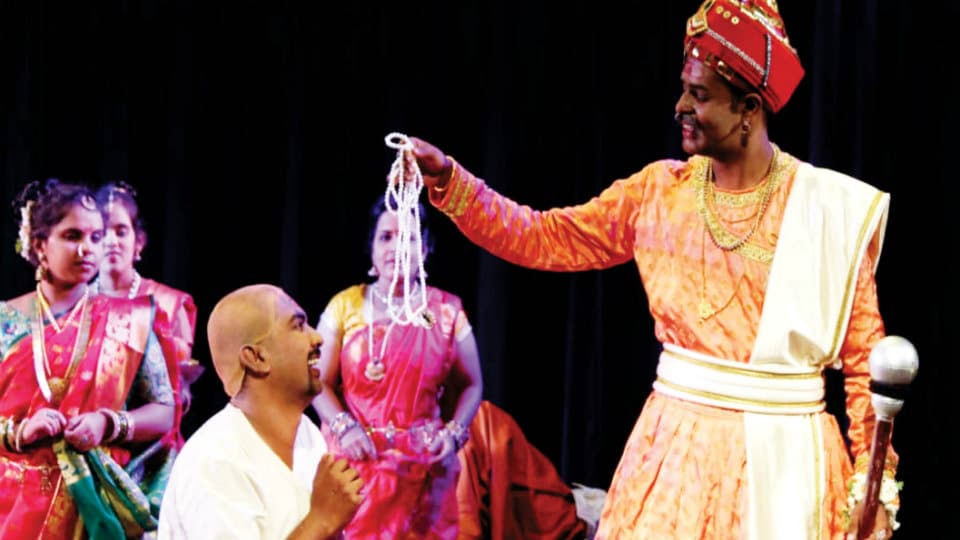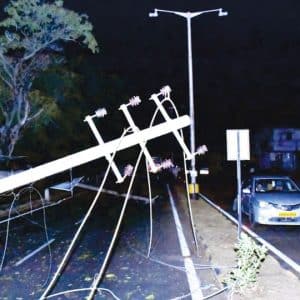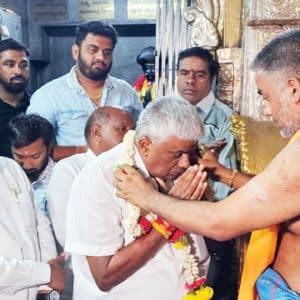The play will be staged at Mini Theatre in Kalamandira premises at 6.30 pm today.
Sanchalana Trust performed the play Ghashiram Kotwal as part of their concluding day in the one-month theatre camp conducted by the Trust in Mysuru recently. Ghashiram Kotwal is written by playwright Vijay Tendulkar in 1972 as a response to the rise of a local political party, Shiv Sena, in Maharashtra. The play is a political satire, written as historical drama. It is based on the life of Nana Phadnavis (1741 – 1800), one of the prominent Ministers in the court of the Peshwa of Pune and Ghashiram Kotwal, the Police Chief of city.
Its theme is how men in power give rise to ideologies to serve their purposes, and later destroy them when they become useless. It was first performed on 16th December 1972, by the Progressive Drama Association in Pune. Jabbar Patel’s production of the play in 1973 is considered a classic in Modern Indian Theatre.
The play begins with an invocation to Lord Ganesha. Then the Brahmins of Pune introduce themselves and we can see the morally corrupt state of affairs in Pune. Nana Phadnavis, who is the Dewan (Chief Secretary) of Pune, is also corrupt and visits the lavani dancer. Ghashiram is working with the lavani dancer. Ghashiram being a Brahmin goes to collect alms at the Peshwa’s festival the next day. However, he is ill-treated there and is charged with pick-pocketing and imprisoned for the offence. He then decides to take revenge. So the play continues on to reach the next part of this play.
Ghashiram barters his own daughter to get the post of Kotwal (Police Chief) of Pune from Nana. Having got the post, he begins to enforce strict rules in the city. He starts asking for permits for everything and starts throwing people in jail for the smallest offences. The situation goes out of hand steadily and the Brahmins then complain to the Peshwa. The Peshwa summons Nana who orders Ghashiram to be killed.
Though hailed as one of the greatest plays of our times, the play as written by the playwright leaves a lot to be desired in terms of neutrality and giving an honest account of both sides. Violence and evil seems to be the ruling force as there’s little else given to the audience to sample.
Historical accuracy and giving our past rulers their due takes a serious beating as Nana Phadnavis is caricatured as a lecherous old man who chases teenage girls and has time to think about little else. The Brahmins of Pune are portrayed as drunken whoremongers who spend all their with dancing girls.
The playwright makes his hatred for the Brahmin class quite evident in the whole play at every juncture and the lack of a strong female character hurts the play and makes it monotonous.
All the negatives of the play seem to be balanced out by the actual performance by the team. The performers on stage do not look like novices at all and most looked a couple of plays old to the stage. The actors seemed comfortable on the stage with ample support from the music pit and a few on stage who could actually sing quite well.
Jeevan Kumar, the director, is an alumnus of Ninasam Theatre School and has done an excellent job as always with the direction as well as the lighting. His work is always a treat to watch and the same was reflected even in this play. The standout performances were the actors who donned the characters of Nana Phadnavis and Ghashiram.
Certain scenes in the play were quite moving where the Brahmin was branded with hot iron for stealing and also the Poona inhabitants picking money off the ground like beggars.
The performances on the stage were complimented equally by the music pit. At the helm in the music pit was Srinivas Bhat, retired senior artiste from Rangayana and also Krishna Chaitanya. The unique part of the music was the use of the Australian aboriginal instrument, Didgeridoo to accentuate cruelty and inhuman qualities in both Nana and Ghashiram. It was an indeed a treat for the ears.
It was an evening well spent for Mysureans with audiences filling up seats up to almost 90% in spite of incessant rains. The play was a success not only for the team but also for the vibrant culture of Mysuru.
—K. Apoorvananda








Recent Comments